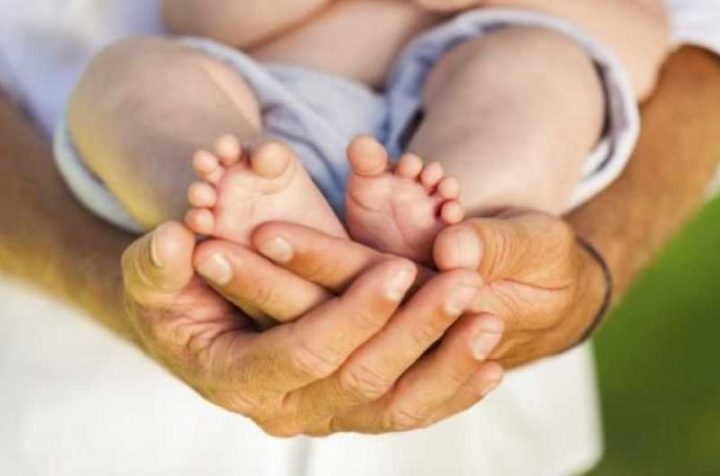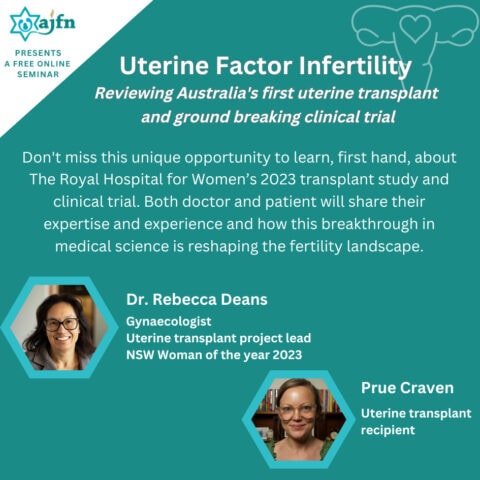Introduction
This week’s SBS Insight program demonstrates the highly emotional and complex nature of surrogacy. (link: https://www.sbs.com.au/ondemand/video/319789635553)
From my perspective as an IVF specialist, surrogacy represents one of the great advances in fertility treatment in recent years. And as an Obstetrician, I also see the incredible effort made by women to carry, nurture and give birth to a baby they are prepared to give away to the recipient couple. Thus there are two sides to what actually happens, as well as the many diverse social and legal views.
When I see couples in my fertility clinic, the idea of ‘surrogacy’ is often not very far from their thoughts. Most of those couples go through years of frustrating attempts to conceive a child. Many have multiple early miscarriages. They start reading anything and everything on Dr Google and can all too easily go down a route where they try increasingly expensive and sometimes ineffective interventions. All this because the desire to have a family “just like everyone else” is overwhelming.
Medical tests may or may not find a particular cause for their infertility, and many go on to have IVF treatment. Over five million IVF babies have been born since the first successful IVF treatment in 1978. Currently about 3% of Australian babies are from IVF treatment. It has clearly been a great success – nothing short of a revolution in fertility treatment.
But in fact, IVF success rates are limited to about 40% per cycle in even the best of circumstances. So, the pressure mounts on couples who are not initially successful. There is a natural tendency for them to start to think that maybe they can’t carry a pregnancy, that the problem is in their womb, and how easy it might be to fix if they could get someone else to carry their embryos. That’s a surrogate: a woman who will carry another couple’s embryo and baby. Many women have close friends who, seeing their struggles, volunteer with the obvious offer to help. And often they think the best they can do is to be a surrogate.
How common is surrogacy?
In reality though, very few couples actually need surrogacy. As frustrating as a diagnosis of ‘unexplained infertility’ or ‘unexplained repeated miscarriage’ can be, most women do succeed eventually. Lots of ongoing research has led to treatment advances assessing all aspects of the problem including the uterine environment, sperm quality, the woman’s immune system, and the genetic quality of the embryos created in IVF. An IVF specialist would be the best person to explore all these aspects with the couple, and in most cases is likely to succeed.
When they have not been successful, the problem most commonly is with the woman’s eggs (rather than her uterus). Women are trying to have babies at a far older age than they did in the past. In 1971, the average age of first pregnancy was 21 years, and now it is over 30. But women are born with a fixed number of eggs, and those eggs deteriorate in number and quality with time.
Thus, on average once a woman reaches 35 years old, egg quality can become the main reason for failure, manifesting as either infertility or repeated miscarriage. It is not their womb but their eggs that are the problem. In fact, egg donors [link to http://drgavinsacks.com.au/service/egg-donors/] are far more commonly the best treatment in these couples. And egg donors (usually aged less than 35) have eggs with a great chance of success in any situation, even in a woman who may be significantly older (in her 40s or more) who has had many unsuccessful attempts to have a baby with her own eggs. We should be very clear in this sadly common situation – an older woman will not succeed using her own eggs and a younger (or different) surrogate womb. Currently we are unable to make ‘new’ eggs in that situation, and so her best chance will be to look for an egg donor.
Whose baby is it anyway?
I find that women and couples facing the prospect of needing an egg donor sometimes find it too difficult to contemplate. Of course, we all want our own genetic children. But genetics are far more complicated than a ‘tape with instructions’ in the form of DNA. What ultimately makes us who we are is a complex interplay of many factors. For example, which genes we inherit from each parent will affect the expression of each gene, and the environment of a cell will influence gene expression. We have only recently started to understand this in a whole new branch of science called epigenetics. And of course, we would all acknowledge that the environment we grow up in will alter the sort of people we are. While we still have much to learn in this area, we also know that the uterine environment will have profound consequences on that child’s health, often well into adult life (such as heart disease).
So, a woman who carries a pregnancy, whether from her own embryo or someone else’s, does have an enormous impact on the long-term development of the child. If a woman or couple need an egg donor, she will of course not contribute the exact genes given by the female, but she will grow that embryo from a microscopic few cells to a full size baby. It is more than ‘carrying’. The mother-baby relationship in a pregnancy is far closer than that. Interactions between baby and mother cells occur from the earliest stages. Maternal hormones enter the foetal circulation, and foetal hormones, DNA and whole cells enter the maternal circulation. The mothers’ immune system is fundamentally and uniquely altered to accommodate this. A mother is not merely a ‘carrier’, but a ‘nurturer’.
Who is surrogacy for?
This brings us back to the concept of surrogacy. Who is it for? It is clearly essential for women who don’t have a uterus (by birth or following a hysterectomy). It is essential for gay men who wish to have a child. It is sometimes necessary when pregnancy may be considered to have major life-threatening risks for the mother (such as when there is heart or kidney disease). And there are indeed a few women who, often for no explicable reason, simply can’t succeed with everything modern fertility treatment can give. They may have had multiple miscarriages with genetically normal pregnancies, or multiple IVF cycles with genetically normal embryos. Altruistic surrogacy in Australia currently involves very small numbers of cases overall. In my clinic (IVF Australia in Sydney) [link to http://ivf.com.au/], one of the largest IVF clinics in the country, we do about 7-10 cases a year. It is believed that many more than that go overseas for commercial surrogacy, although since there is currently no national regulation, there is no formal data collection on that.
How does surrogacy work?
As discussed above, the age of the egg is a key factor. So, if a couple needs to go down the surrogacy route, it’ll be far more likely to work if eggs are collected (from IVF) as soon as possible. This can be done even before a surrogate is actually identified. Eggs can now be frozen and stored indefinitely with excellent survival and success rates. Most couples would fertilise eggs and freeze embryos for which success rates are even better. Placing an embryo back in the womb (of a surrogate) is a simple procedure like having a Pap smear. But the significance of that procedure means considerable effort needs to be done by all sides in preparation. Extensive counselling of all parties (recipient and surrogacy families), opinions from obstetricians, psychologists and lawyers takes time and money. Ultimate success (never guaranteed of course) will be much more likely when the process is open, formal, and regulated.
What does it feel like to have a surrogate baby or to be a surrogate mother?
In the couple I was involved with in the SBS Insight program, there was no doubt varying emotions and feelings throughout the process – as you might expect. But the preparation meant that it continued smoothly, even when events worked out slightly differently to planned. None of us were expecting the recipient couple to be in the delivery room during labour and delivery. But our extensive preparation meant that it just seemed right. And ultimately, it was a truly wonderful event for the recipient to see the labour and birth first hand, and really appreciate what her surrogate was doing for her.
Altruistic surrogacy created an intense emotional experience in which all appreciated that the newborn baby was very special indeed. Created and stored as a frozen embryo two years previously, carried in the womb of the surrogate to America (where she lived) and back, and being born with two mothers, a father and the surrogate’s partner watching over lovingly. It has been a privilege for me to be part of such a process, and I hope that the SBS program will help bring this – often misunderstood – treatment into mainstream cultural acceptance.
Dr Gavin Sacks is one of the very few senior IVF specialists in Australia who is also a practising obstetrician. Gavin writes regularly about the latest technological advances in fertility treatment and practice.
By Dr Gavin Sacks; 5 September, 2014
Source: http://drgavinsacks.com.au/2014/09/is-surrogacy-the-answer-to-infertility/





